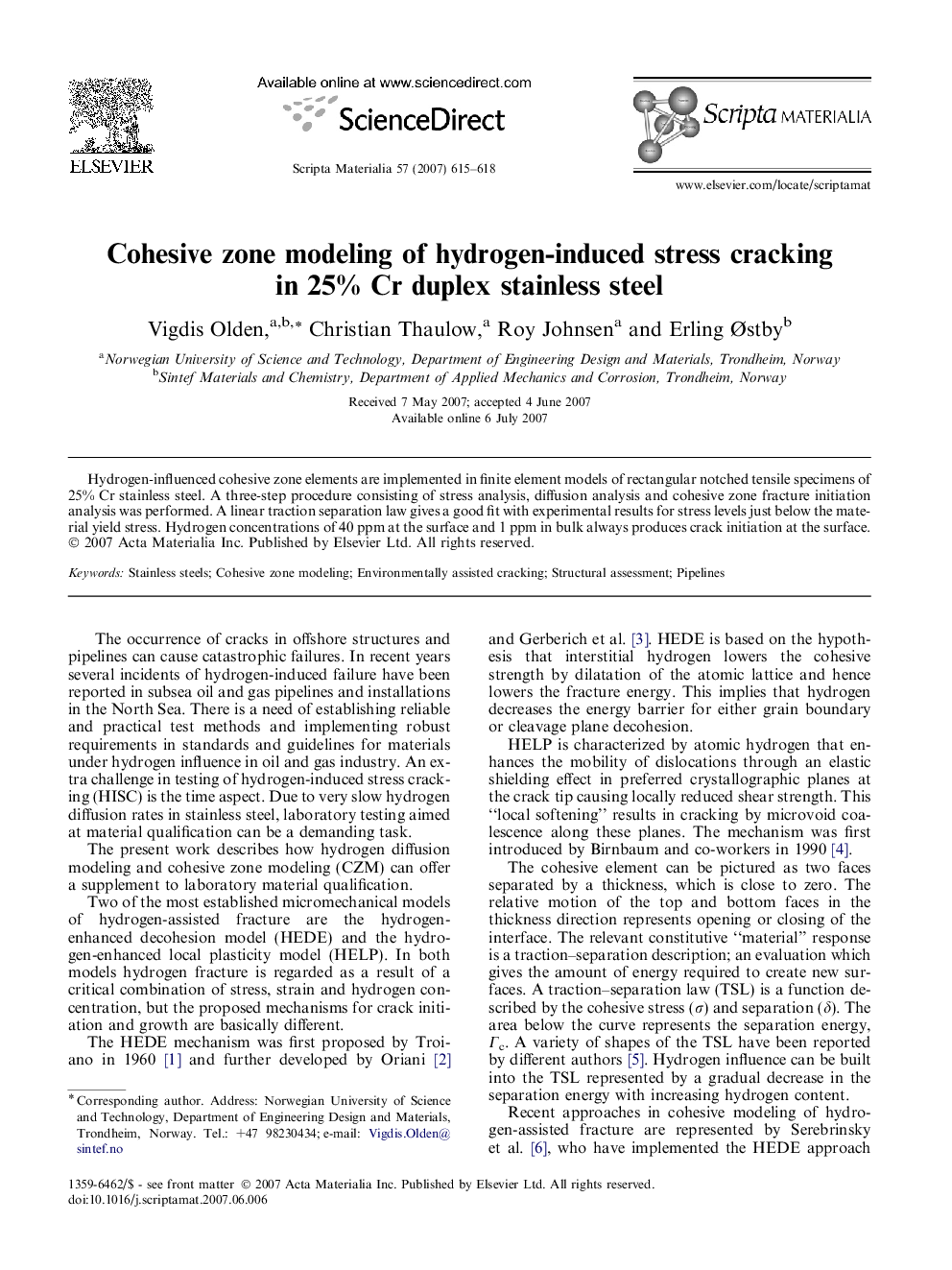| Article ID | Journal | Published Year | Pages | File Type |
|---|---|---|---|---|
| 1503334 | Scripta Materialia | 2007 | 4 Pages |
Abstract
Hydrogen-influenced cohesive zone elements are implemented in finite element models of rectangular notched tensile specimens of 25% Cr stainless steel. A three-step procedure consisting of stress analysis, diffusion analysis and cohesive zone fracture initiation analysis was performed. A linear traction separation law gives a good fit with experimental results for stress levels just below the material yield stress. Hydrogen concentrations of 40 ppm at the surface and 1 ppm in bulk always produces crack initiation at the surface.
Keywords
Related Topics
Physical Sciences and Engineering
Materials Science
Ceramics and Composites
Authors
Vigdis Olden, Christian Thaulow, Roy Johnsen, Erling Østby,
